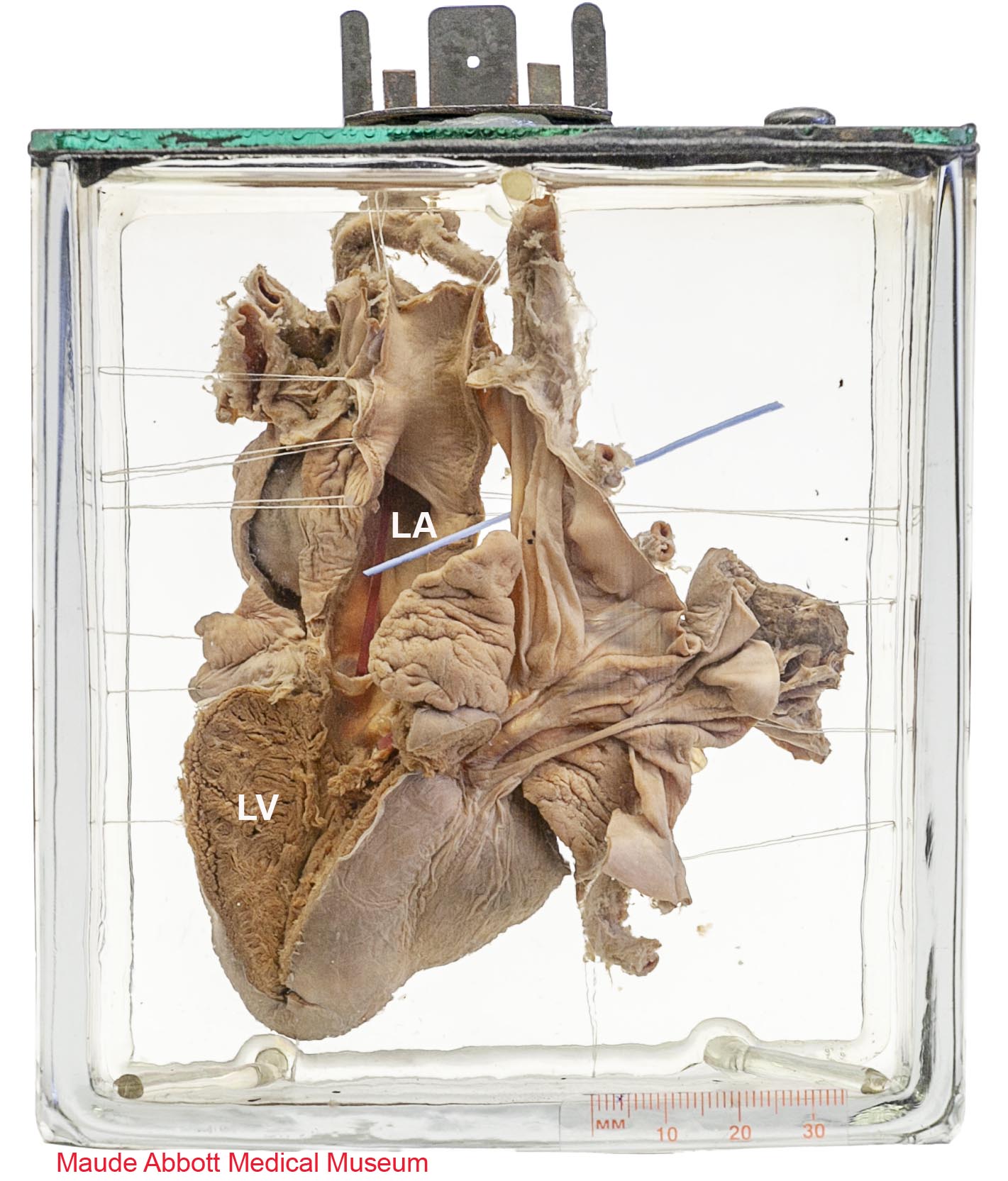
Abbott Specimen 23

Specimen Card Nomenclature
Heart of alligator
International Classification of Diseases
NA
Atlas Illustration
None
Donor
Unknown
Date
Unknown
Age
NA
Description
The specimen has been opened to show the right ventricle (RV), right aorta (RA) and pulmonary artery outflow tract (PA). Crocodilians have two aortas. The red rod in the right one of this specimen passes through the foramen of Panizza, which can open and close to allow temporary cessation of blood flow from the right to the left side when the animal is submerged. A view of the back of the specimen shows the left ventricle (LV) and the continuation of the rod through the foramen into the left aorta (LA).
A similar specimen was shown by Abbott in Plate III Fig 5 of the Atlas. She indicated that it was “of great interest” because it illustrated an important step in the heart’s development from its reptilian to its mammalian form. Jonathon Meckel the Younger (1781-1833), a German anatomist with a particular interest in teratology, proposed a relationship “between possible arrests in development and cardiac defects, showing that some defects appeared similar to normal cardiac structures as seen in lower animals.” In 1923, Dr. Alexander Spitzer interpreted Meckel’s theory more precisely and proposed that the heart of blue babies was halted at about the reptile stage. Well aware of this hypothesis, Abbott stated that:
“Much light is cast upon the development of the mammalian heart, and, incidentally, upon the period at which arrest of growth has taken place in cardiac anomalies of the graver sort by a comparative study of the adult fish, amphibian, and reptilian organ . . . It has remained, however, for Prof. Alexander Spitzer of Vienna … to originate a teleological theory of startling simplicity, based upon the indisputable evidence of vestigial remains in the right ventricle which link the human heart with the reptilian in a common ancestry.”
(Thanks to Clyde Partin, Laura Bourque and Russell Fraser for help in elucidating the nature of this specimen.)

